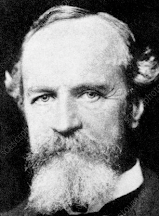Greg Taylor writes: Dr. Julie Beischel – who has been investigating mediums on a full-time basis since 2003, first at the University of Arizona and subsequently at the Windbridge Institute – understands the necessity of accounting for dazzle shots when scientifically evaluating mediumship. As such, in her experimental set-up participants choose which of several readings they think is the one that is most meaningful to them. That way, she says, “if one reading contains true dazzle shots but not a lot of other correct information, that may be reflected in the raters' choices.”
Dr. Beischel’s experience in researching mediumship has informed numerous other aspects of her experimental process. She realized that, in order to optimize the chances of uncovering concrete evidence of the survival of consciousness, she should be testing only the best mediums. “If we wanted to study the phenomenon of high jumping, we would find some good high jumpers,” Dr. Beischel points out. “We wouldn’t invite some people off the street into the lab and tell them, ‘go jump over that bar’. In mediumship research, we would select participants with a track (and field) record of reporting accurate information about the deceased.”
As such, Dr. Beischel and her research team have employed an extensive screening, training, and certification procedure that consists of eight steps, during which prospective mediums are firstly interviewed, and then tested to see if they can achieve a certain level of accuracy with their readings. Those that pass the testing stage are then put through a training schedule and, once they have completed all the necessary steps, they are then inducted as a ‘Windbridge Certified Research Medium’ (WCRM). Contrary to the widely held perception of mediums as money-hungry fraudsters, there is no payment involved for either the certified status, or for the medium’s time in taking part in experiments. They give their time freely for the experiments, and Dr. Beischel makes clear that they are willing, for the purposes of science, “to attempt experimental protocols that go well beyond their comfort zones...they have a genuine and personal interest in our research questions and are willing to volunteer their time to assist in answering them.”
Nevertheless, Dr. Beischel and her team still take extensive measures to protect against the possibility of fraud and unintended assistance, partitioning off every person involved in the experiment from being able to relay information about the sitter, the deceased person they wish to be in contact with (‘discarnate’), and which is the correct reading:
We need to eliminate all the normal explanations for how the
information the medium reports could be accurate. To rule out fraud, we have to
make sure the medium can’t look up information about the sitter or the deceased
person online or in any other way. We also need to account for cold reading...
To prevent that from happening, the medium will be what’s called masked or
blinded to the sitter. The medium won’t be able to see, hear, smell, etc., the
sitter during the reading: but, as stated above, the sitter should be involved
somehow in order to optimize the environment, so we’ll just make sure his
intention is that his discarnate communicates with the medium.
Now if I as the
experimenter know things about the sitter or the discarnate during a reading, I
could also cue the medium... So in our design, let’s also blind me to the
information about the sitter and the discarnate... That just leaves the sitter.
When a person reflects on the accuracy of a mediumship reading that he knows
was intended for him, his personality and psychology affect how he rates the
statements.
A person who is more laid-back and forgiving may score more of the items as accurate whereas someone more cynical and strict may only score a few as right. That phenomenon is called rater bias... To maintain blinding, the sitter won’t be able to tell which reading is which... So, to account for fraud, cold reading, experimenter cueing, general statements, and rater bias, we...design an experiment in which the setting is similar to a normal mediumship reading but where the medium, the sitter, and the experimenter are all blinded.
The results of these tightly controlled experiments were highly evidential, Dr. Beischel and her fellow researchers concluded, of “the phenomenon of anomalous information reception (AIR), the reporting of accurate and specific information about discarnates without prior knowledge about the discarnates or sitters, in the absence of any sensory feedback, and without using deceptive means.” Or, in more simple terms, as Dr. Beischel puts it: “When I applied the scientific method to the phenomenon of mediumship using optimal environments, maximum controls, and skilled participants, I was able to definitively conclude that certain mediums are able to report accurate and specific information about discarnates (the deceased) without using any normal means to acquire that information.”
Greg Taylor, “What is the Best Available Evidence for the
Survival of Human Consciousness after Permanent Bodily Death?” An essay written
for the Bigelow contest addressing this question. I am presenting excerpts
without references, but this essay is available with footnotes and a
bibliography at https://bigelowinstitute.org/contest_winners3.php.










